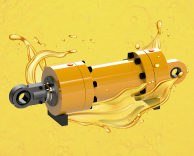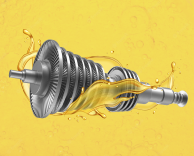Oil Analysis in Field Inspections: Techniques, Methods, and Best Practices
Introduction:
Subsequently, oil analysis has become an integral component of
field investigations that allows industries to identify impending
failures, contamination, and degradation in lubricating oils. By
monitoring the oil on a routine basis, operators can keep their
equipment up and running, extend equipment life, and avoid
unplanned downtime. Techs can diagnose contaminants, moisture, and
wear that, if not caught early, can allow them to make educated
decisions on oil changes. Maintenance and machine repair.
In this article, we will discuss the vital methodologies for
conducting oil analysis during field inspections, such as Visual,
Tactile, and Auditory inspection techniques. These methods allow a
lubrication maintenance team to quickly get an overview of the
health of their lubrication system and to be able to take action
before significant failures develop.
The importance of oil analysis in machine maintenance
Oil is the lifeblood of any machinery, and the quality is critically important to your machinery's performance and life span. As time progresses, the oil deteriorates from oxidation, contamination , and thermal degradation. There are several advantages to performing routine oil analysis:
- Early Warning: It can detect contaminants such as water, dirt, and rust in equipment to prevent serious damage.
- Reducing Unscheduled Downtime: Scheduled maintenance is possible with regular oil analysis, saving costs based on repair dollars.
- Optimized Performance of Machines: Clean, high-grade oil allows the equipment to work to its maximum capacity, enhancing productivity and reducing the wear and tear on equipment.
- Cost Savings - companies can save on repair costs and oil replacement by prolonging the life of their machinery and optimizing oil changes.
For efficient results, the industry can rely on the advanced Oil Condition Monitoring Equipment from Minimac that has been engineered to deliver real-time information on oil condition, contamination, and wear.
Visual Inspection of Oil: Identifying Key Indicators
One of the easiest and most effective means of determining oil condition in the field is by visual examination. Key visual findings to be on the lookout for include:
1. Color Assessment
The color of oil is one of the first indicators of spoilage. An Important Note about Color: A dramatic alteration in the color of the oil could be a sign of the following problems:
- Oxidation: As oil combines with air, it darkens with age. This can create deposits and acids, causing equipment to leak.
- Thermal breakdown: When subject to high temperatures, the oil becomes darkened, which indicates exposure to extreme heat, which can lead to quicker breakdown.
- Contamination: Milky or cloudy indicates water contamination, which can cause emulsions that affect the lubricant’s performance each other.
It can be compared with a new/fresh sample to establish its condition.
2. Detecting Emulsions and Cloudiness
A cloudy or opaque appearance of the oil sample typically indicates contaminated oil. These can include:
- Additives Breaking Down: If your oil’s additives break down, you will likely see haziness, which will reduce the performance of the oil.
- Air, Salt, or Glycol Contamination: Emission of these pollutants may emulsify the oil and deteriorate the lubrication performance.
- Stable vs. Unstable Emulsions: Stable emulsions can be good, whereas unstable emulsions can cause problems such as foaming or insufficient lubricity.
3. Identification of Free Water and Sediments
One of the worst contaminants in oil is water: it accelerates wear of components and can damage industrial machinery. Water will tend to collect at the bottom of the container, and the heavy liquid can have a tendency to promote rust and corrosion inside machinery.
Signs of free water include:
- Separation Rate: The rate is with which the water separates from the oil. Rapid separation can tell us about the level of water concentration.
- Sediment Colour and Density: Sediment appearance and density are often important in distinguishing what type of contamination exists. For instance, black or amber deposits could mean degraded oil or carbon.
- Laser Through the Bottle: A laser pointer is a visual aid that can be moved around the bottle and immediately see where the water/oil separation is , and if oil feeds into water, it can be directed to the junk bottle.
4. Using Oil Colour for Diagnosis: A Deeper Dive
Oil color is not only a sexy observation—it is a diagnostic one. Ways of improving color-based oil analysis. There are several options for improving the accuracy of color-based oil analysis, among these are:
- By Oil Colour Gauges: Colour gauges facilitate a field technician to compare the oil sample visually with preset color charts to simplification in finding out degradation and contamination.
- Glass or PET Plastic Bottles: Glass or PET plastic bottles are perfect for storing samples of oil, as they do not react with the oil and provide a transparent flat surface to compare.
- Comparison to New Oil: Perhaps the easiest method when considering oil color is to compare a sample to new oil of the same type. Drastic color changes might signify that the oil has deteriorated or been polluted.
5. Routine Inspection of Sight Glasses in Oil Analysis
Water and water-based contaminants are among the most damaging in the oil, as they can compromise oil performance very effectively. Moisture presence can be determined visually, particularly for transparent containers. Key steps include:
- Cloudy or Milky: A cloudy or milky appearance is typically water emulsion -water that is suspended in the oil.
- Using Comparators: For a more precise detection of moisture, a comparison of clear new or non-treated oil in bottles can be used for reference.
- Laser Pointer: This can help you see the water phase in the oil, giving yet another layer of analysis.
6. Routine Sight Glass Inspections and What to Look For
Sight glasses are useful to inspect oil in equipment while it is in motion. Continuous checks can give you a picture of the condition of the oil.
- Oil Level: Any sudden rise or fall of the oil level may indicate a leak or malfunction.
- Foaming: The production of foam is indicative of air or water contamination and may cause pump cavitation and inadequate lubrication.
- Oil Color and Clarity: If the oil is dark or cloudy, there is probably oxidation, contamination, and/or decomposition.
- Uses of Blue Pen-Lights: May also be used to observe a difference in oil levels and see into the oil.
7. Auditory and Tactile Inspection Methods
Together with the visual, it is also important for the diagnosis, the auditory, and the tactile examination.
- Audible Gear and Hydraulic Indicators: Auditory clues have been used for years by many operators to diagnose potential equipment problems with the Auto Lubricating Oil System. For instance:
- Gearing: A pleasant “singing” of gears is often a healthy sound. Grinding or squealing, on the other hand, might indicate issues like a lack of oiling or dirt getting in.
- Hydraulic Systems: If your pumps are making metallic noises, it may be a sign of water in oil or high-pitched vibrations, which could be signs of cavitation, among other things.
8. Advisory Clues for Grease and Sludge
- Grease Consistency: Grease should be slippery and slick. If it’s slimy, lumpy, or sticky, it might be spoiled or bad.
- Sludge and Debris: Muddy or other dirt or pasty-like, tacky oils mean severe contamination; you need to take action.
9. Using Odours as a Diagnostic Tool
Smell detection Smell analysis may be a quick and effective technique for detecting oil degradation or contamination:
- Burning Oil Smell: Burning the oil creates carbon in the oil, and then you smell the result of that.
- Diesel Odour: Referring to a diesel scent likely means the presence of fuel in the oil.
- Odour Comparators: By comparing new, oxidized, or diesel-contaminated oil in bottles, you can quickly define the type of contamination.
Common Challenges in Oil Field Inspections
- Hard to Reach Areas: The individual parts of your equipment can be hard to reach, making be hard to get representative samples.
- Data Overload: Making sense of large amounts of data needs powerful tools and systems to detect trends and spot patterns.
- Regularity in Inspections: Non-uniform inspection processes can result in unreliable test outcomes. For accurate results, it is imperative to establish uniform examination protocols.
Best Practices for Effective Oil Inspections
- Train Technicians Frequently: Continuing education and training will keep technicians up to date on the state of the art of oil analysis.
- Leverage Technology: Utilization of technology, including sensors, laser pointers, and data analytics software, can improve the time value of field inspections.
- Document Results: Document such inspections for future records and trending.
- Regular Maintenance: Carry out regular oil checks to monitor changes in oil condition over time.
- Standardize Protocols: It is important to use a uniform protocol so that results can be compared.
Conclusion
Oil analysis - a critical tool to keep your industrial machinery
healthy and efficient. Technicians can take regular, visual,
tactile, and audible inspections of their field maintenance
practices, checking for signs of oil degradation, contamination,
and wear. This knowledge allows for preemptive responses that
minimize unscheduled downtime, maximize asset performance, and
extend equipment life.
Though there are times when challenges such as data saturation
and hard-to-reach areas can throw a curveball, adhering to best
practices like technician training, leveraging state-of-the-art
equipment, and adhering to standardized inspection procedures
ultimately will lead to accurate and repeatable results over time.
When oil analysis is given the implementation it deserves as part
of a proactive maintenance program, end users can maximize
operations, productivity, and realize substantial cost savings
over time.
Learn more about our services and industry insights by visiting
our official LinkedIn page:
Minimac Systems





